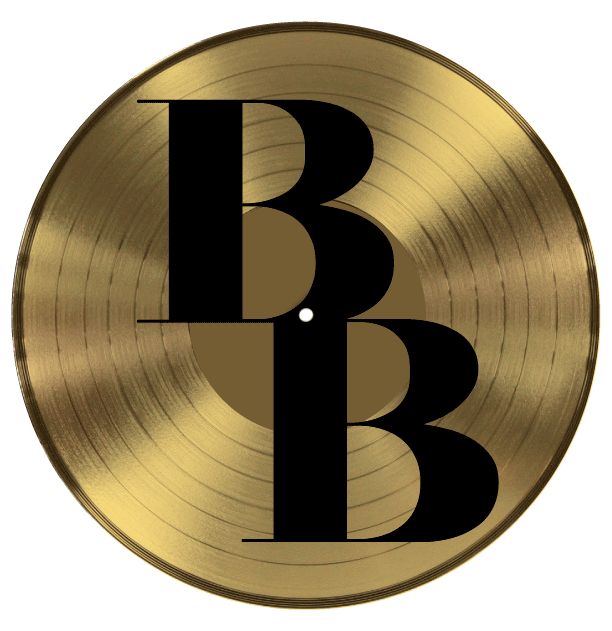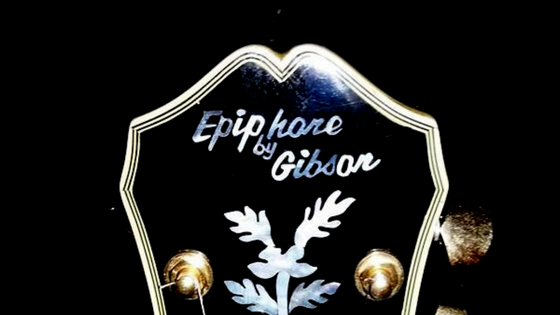The Korean Connection
In 1985 Gibson commissioned Korea based Samick Guitar builders to begin making a few models under the Epiphone trademark, moving their manufacture from Matsumoku Japan. The most popular of them was the Sheraton II. A run of about 50 were made with the first version of lettering on the headstocks. These were premium quality instruments but the logos were a bit unrefined. Buddy Black has been searching the world for these rarest of the Sheratons and as of this writing has found and purchased 2. Buddy says, “I would have loved to have been in the Gibson board room when the Samick representatives walked in with the first ones. Not sure if there was laughter involved, but I expect they left with urgency to make a more acceptable model!!” There were at least 2 more subsequent states of headstock lettering that were increasingly better refined. All of the Korean made Sheratons are examples of superior fit and finish. They play like a dream with very low action. The frets are smooth as silk, binding is nearly perfect and the paint is as well masked and applied as anything Gibson ever did. They mirrored the upscale combination of mother of pearl and abalone position markers used in the 50’s and 60’s models. 5 layer binding around the neck and headstock and 6 layer around the top. Those were accented by a thin layer of black between the binding and the body color. As in the better Gibson models, they have binding nibs at the fret ends. They even bound the f-holes! About 1989 Samick changed the headstock logo to only Epiphone, with Gibson etched into the truss rod covers. The gold plating is as sturdy as Gibson. All said, they are some FINE guitars.
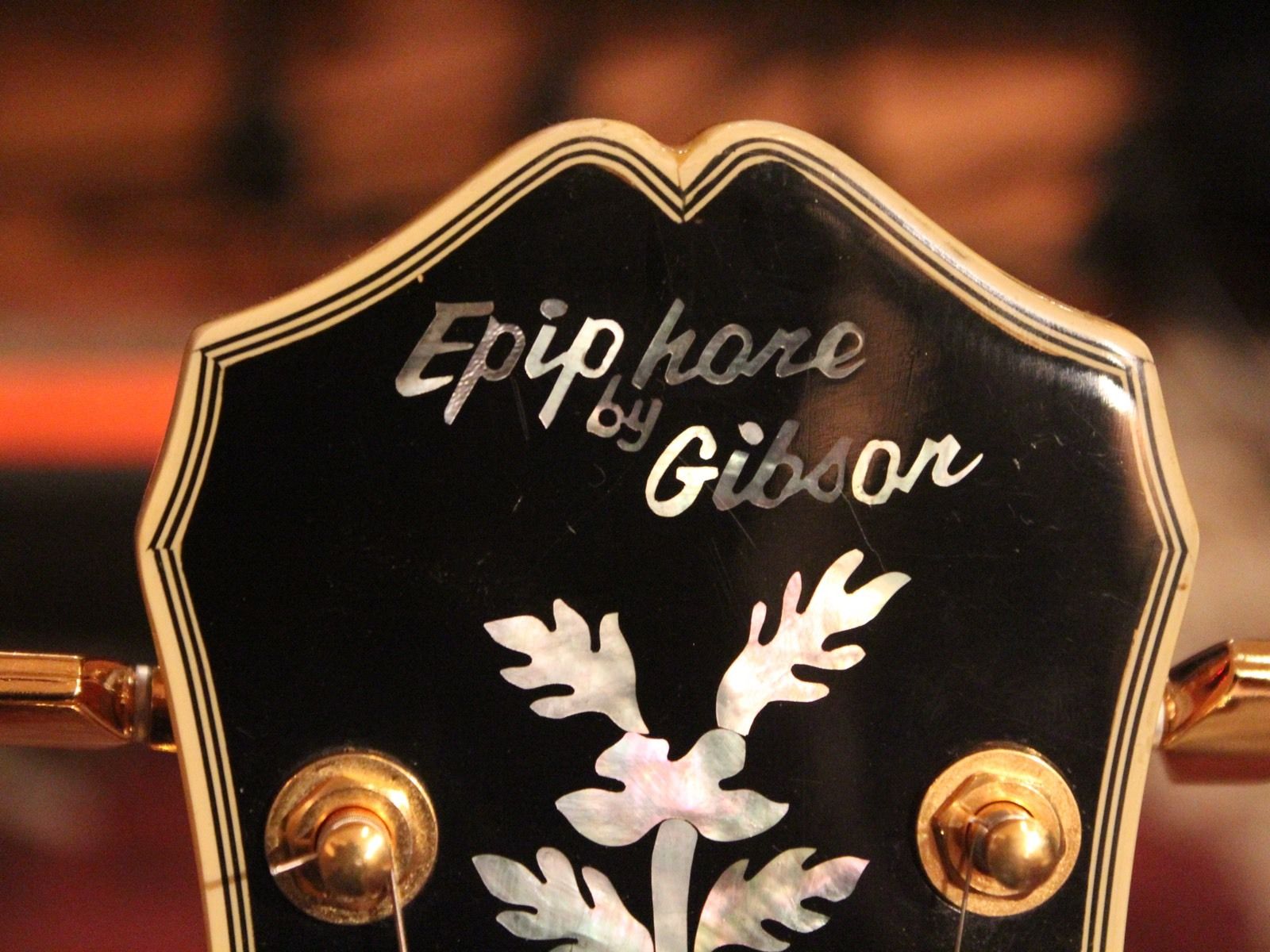
Epiphone First State
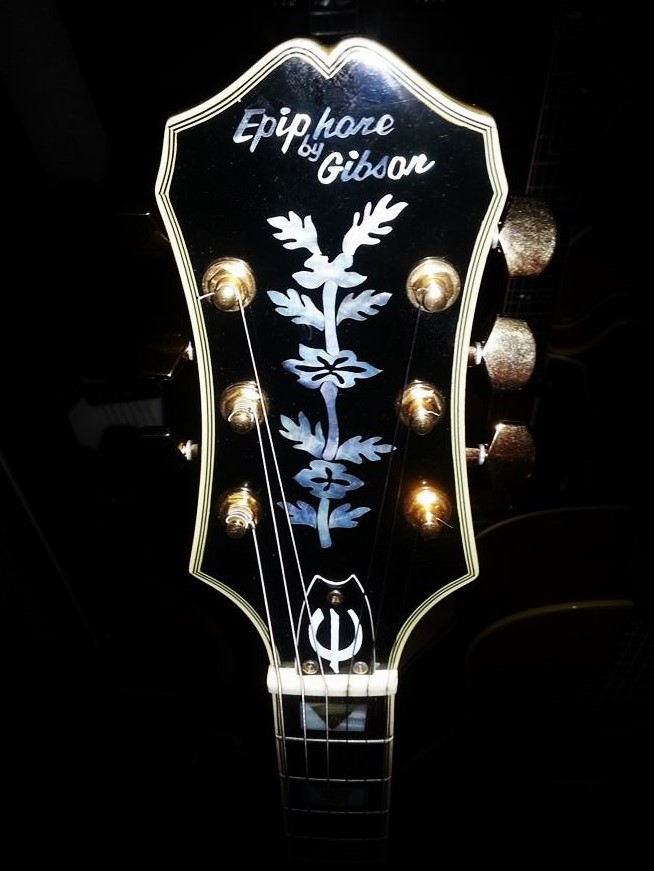
Epiphone First State
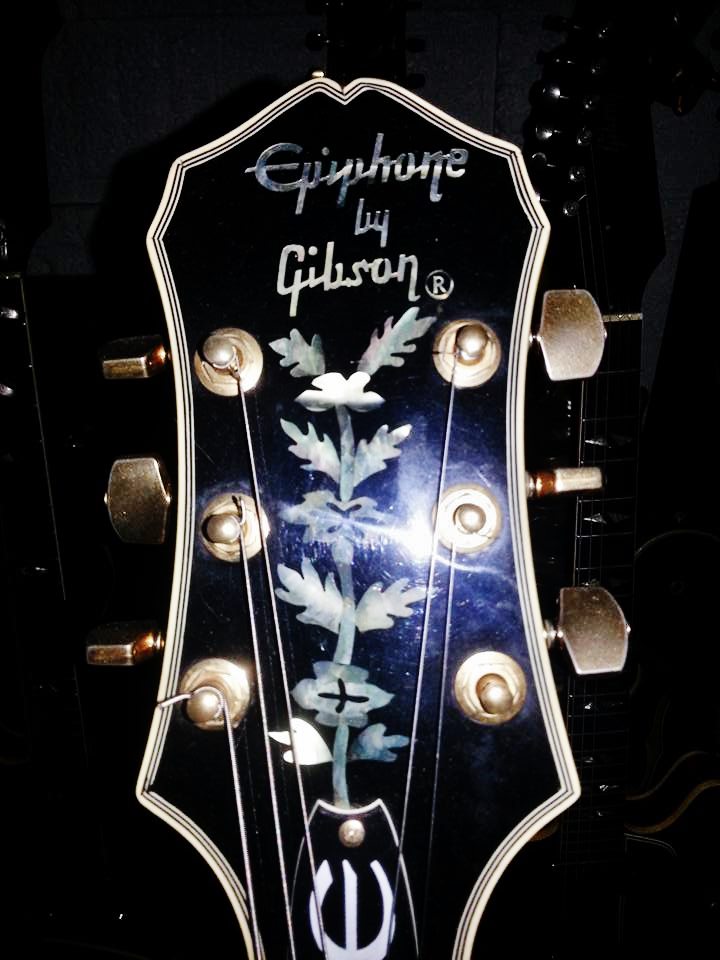
Epiphone Second State
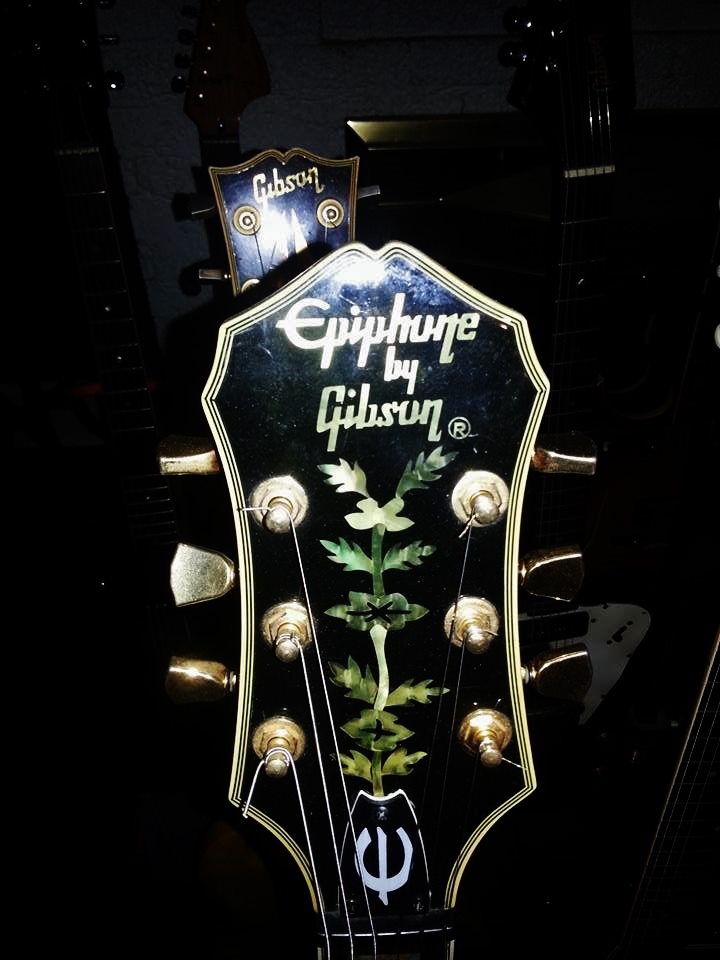
Epiphone Final State
More Epiphone History
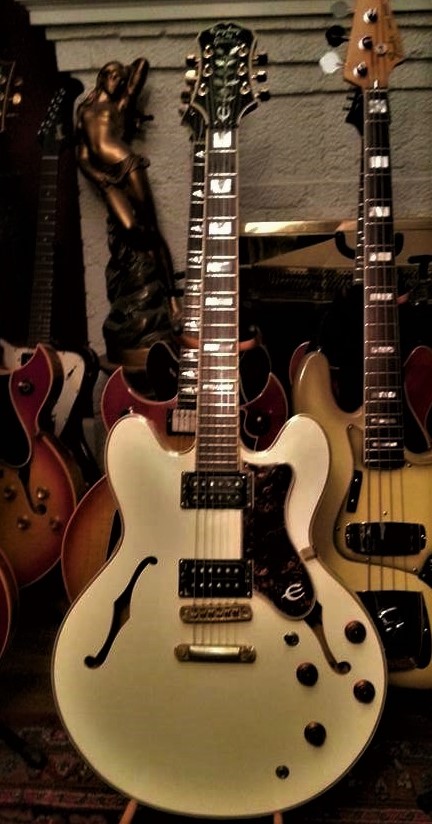
Rare White Epiphone
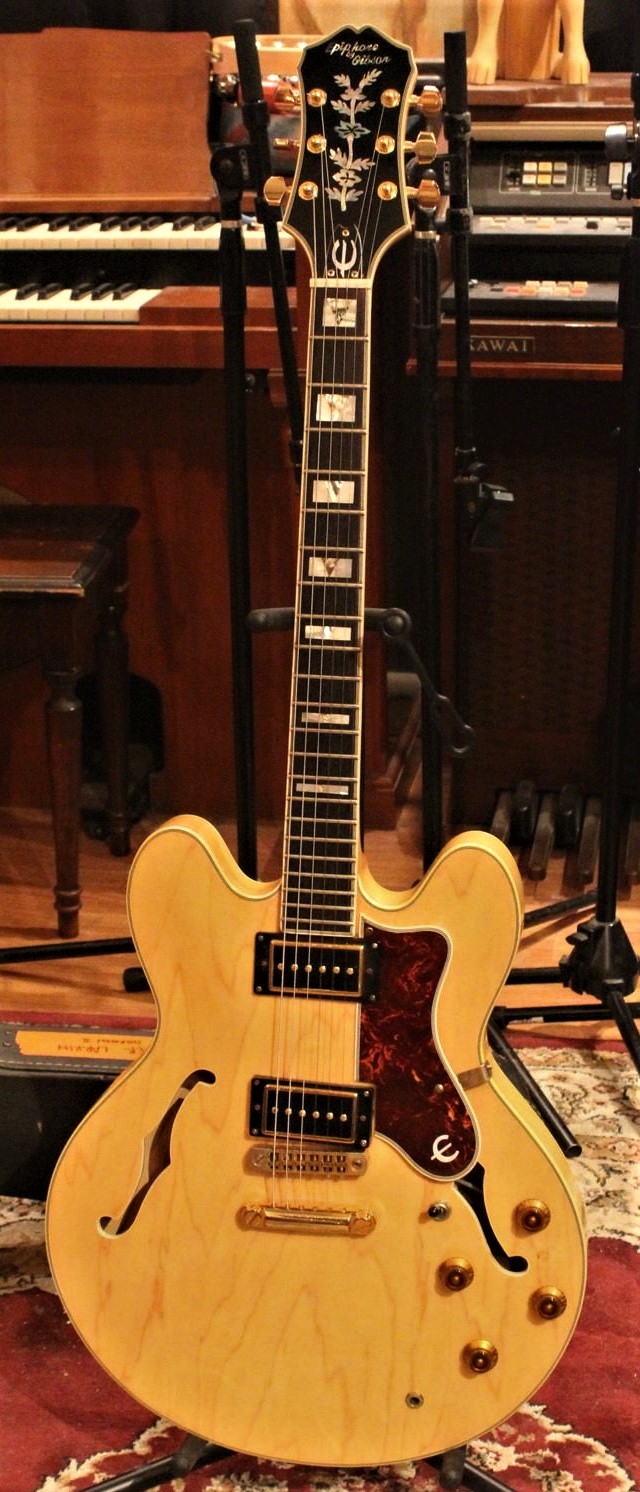
Natural First State Epiphone
1958 Epiphone Sheraton introduction specs:
In Conclusion
R
